Egypt unveils ancient tomb and sarcophagi in Luxor
Al-Assasif necropolis is the burial site of nobles and senior officials close to the pharaohs
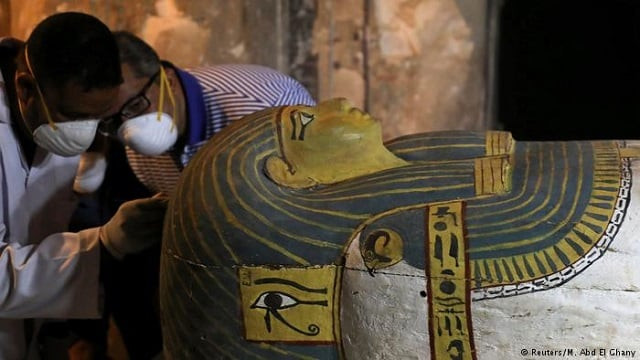
PHOTO COURTESY: DW
In a ceremony in front of the temple of Queen Hatshepsut, Antiquities Minister Khaled al-Anani announced that French and Egyptian archaeologists had discovered "a new tomb... with very nice paintings".
Located between the royal tombs at the Valley of the Queens and the Valley of the Kings, the Al-Assasif necropolis is the burial site of nobles and senior officials close to the pharaohs.
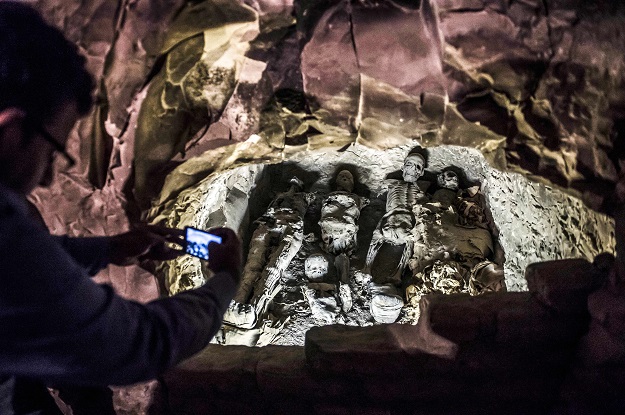 1. This picture taken on November 24, 2018 shows a man using a cell phone to take a picture of a group of mummies stacked together at the site of Tomb TT28, which was discovered by an Egyptian archaelogical mission at Al-Assasif necropolis on the west bank of the Nile north of the southern Egyptian city of Luxor. - Located between the royal tombs at the Valley of the Queens and the Valley of the Kings, the Al-Assasif necropolis is the burial site of nobles and senior officials close to the pharaohs.PHOTO: AFP
1. This picture taken on November 24, 2018 shows a man using a cell phone to take a picture of a group of mummies stacked together at the site of Tomb TT28, which was discovered by an Egyptian archaelogical mission at Al-Assasif necropolis on the west bank of the Nile north of the southern Egyptian city of Luxor. - Located between the royal tombs at the Valley of the Queens and the Valley of the Kings, the Al-Assasif necropolis is the burial site of nobles and senior officials close to the pharaohs.PHOTO: AFPEgypt struggles to restore Cairo's historic heart
Among the finds in the tomb are sarcophagi, statues and some 1,000 funerary figurines called 'Ushabtis' made of wood, faience and clay.
The tomb dates back to the Middle Kingdom, which spanned the 11th and 12th dynasties, and belonged to "Thaw-Irkhet-If", mummification supervisor at the Temple of Mut in Karnak, according to the ministry.
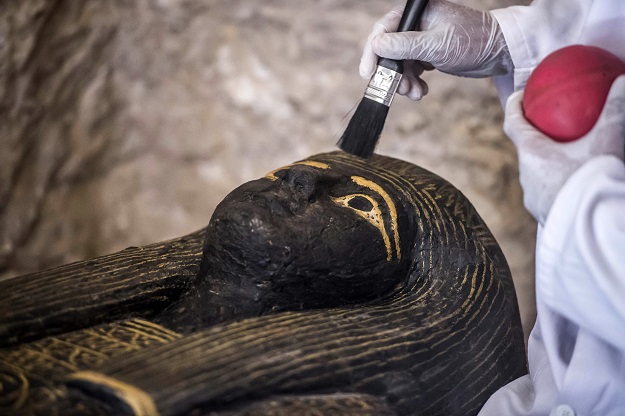 2. An Egyptian archaeologist brushes the top of a carved black wooden sarcophagus inlaid with gilded sheets, dating to Egypt's Late period (7th-4th century BC) discovered by an Egyptian archaelogical mission at Al-Assasif necropolis on the west bank of the Nile north of the southern Egyptian city of LuxorPHOTO: AFP
2. An Egyptian archaeologist brushes the top of a carved black wooden sarcophagus inlaid with gilded sheets, dating to Egypt's Late period (7th-4th century BC) discovered by an Egyptian archaelogical mission at Al-Assasif necropolis on the west bank of the Nile north of the southern Egyptian city of LuxorPHOTO: AFPSeparately, archeologists from the French Institute of Eastern Archeology (IFAO) and the University of Strasbourg have discovered two sarcophagi dating back to the 18th dynasty, Anani told a news conference.
One of the two contains the "well-preserved" mummified remains of a woman named Thuya, the antiquities ministry said in a statement.
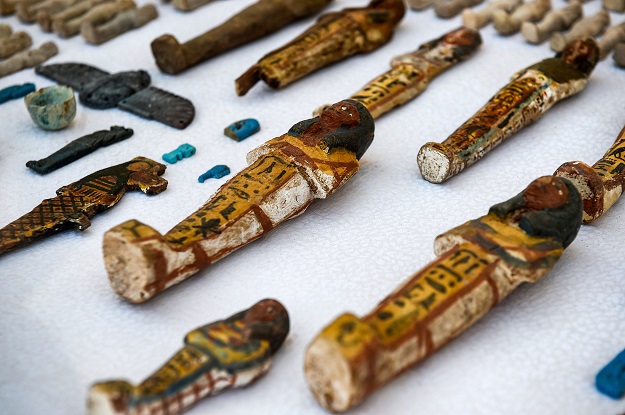 This picture shows carved wooden statues and funerary figurines called 'Ushabtis' made of wood, faience and clay laid out on a table, discovered by an Egyptian archaelogical mission at tomb TT28PHOTO: AFP
This picture shows carved wooden statues and funerary figurines called 'Ushabtis' made of wood, faience and clay laid out on a table, discovered by an Egyptian archaelogical mission at tomb TT28PHOTO: AFPBut ministry spokesperson Nevine Aref told AFP later that work was still ongoing to definitively identify the name of the mummy.
Orient meets Occident as Louvre Abu Dhabi rains light on art
Egyptian authorities regularly announce archaeological discoveries with great fanfare, although the country is often accused of a lack of scientific rigour and neglect of its antiquities.
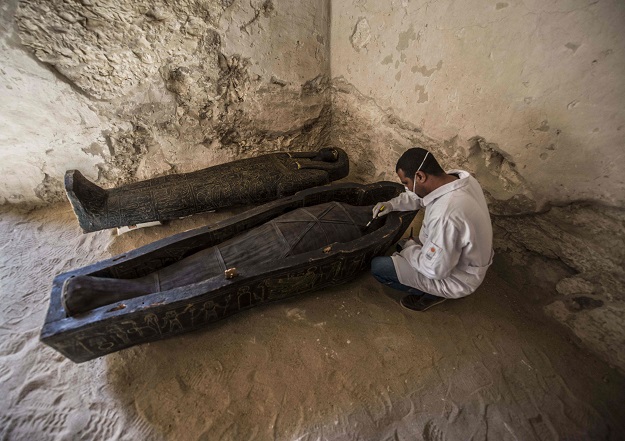 5. An Egyptian archaeologist brushes a mummy laid inside a carved black wooden sarcophagus inlaid with gilded sheets, dating to Egypt's Late period (7th-4th century BC)PHOTO: AFP
5. An Egyptian archaeologist brushes a mummy laid inside a carved black wooden sarcophagus inlaid with gilded sheets, dating to Egypt's Late period (7th-4th century BC)PHOTO: AFPArchaeological sites, particularly in Luxor, make Egypt a major draw for foreign tourists.
Hit by the turmoil that enveloped Egypt after the 2011 uprising that ousted longtime president Hosni Mubarak, the tourism sector has picked up this year.


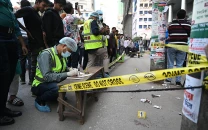
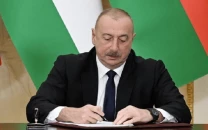
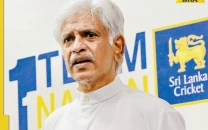














COMMENTS
Comments are moderated and generally will be posted if they are on-topic and not abusive.
For more information, please see our Comments FAQ